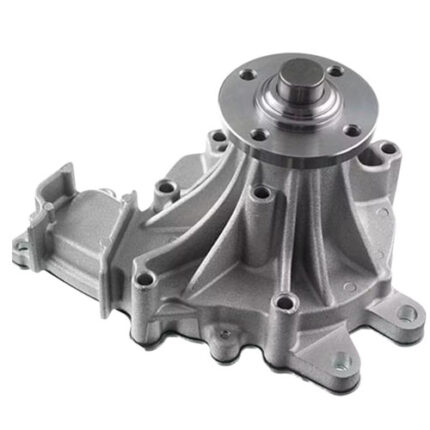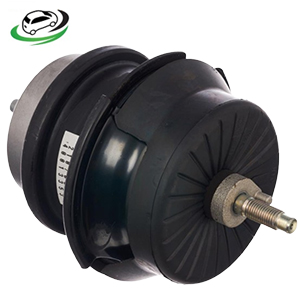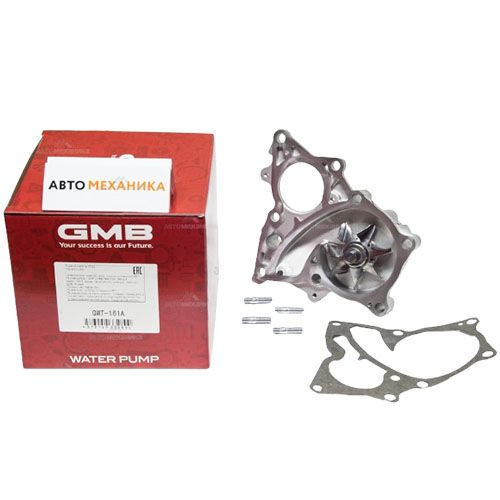-6%
Get Water Pump For 1GD-FTV & 2GD-FTV Engines in Kenya
The water pump is an essential component of the cooling system in Toyota’s 1GD-FTV (2.8L) and 2GD-FTV (2.4L) diesel engines. It ensures efficient coolant circulation, preventing engine overheating and maintaining optimal performance.
This comprehensive guide will cover:
- Overview of the 1GD-FTV & 2GD-FTV Engines
- What is a Water Pump?
- How It Works
- Functions of a Water Pump
- Benefits of a Well-Functioning Water Pump
- Common Symptoms of a Failing Water Pump
- Causes of Water Pump Failure
- Inspection and Maintenance Tips
- Water Pump Replacement Procedure
- Choosing the Right Water Pump for Your 1GD-FTV or 2GD-FTV Engine
Overview of the 1GD-FTV & 2GD-FTV Engines
The 1GD-FTV (2.8L) and 2GD-FTV (2.4L) engines are turbocharged diesel engines from Toyota’s GD series, found in models such as:
- Toyota Hilux
- Toyota Fortuner
- Toyota HiAce
These engines are known for their efficiency, reliability, and performance, but like all diesel engines, they require a robust cooling system to prevent overheating. The water pump plays a crucial role in this system.
What is a Water Pump?
The water pump is a mechanical pump that ensures the continuous flow of coolant through the engine block, cylinder head, radiator, and hoses.
A typical water pump assembly consists of:
- Pump Housing – Made of aluminum or cast iron, housing the impeller and bearings.
- Impeller – A rotating fan-like structure that moves coolant through the system.
- Pulley or Drive Gear – Connects to the engine’s timing belt, timing chain, or serpentine belt to drive the pump.
- Seals & Bearings – Prevent coolant leaks and ensure smooth operation.
How It Works
The water pump is driven by the timing belt, timing chain, or serpentine belt and functions in the following manner:
- Coolant is drawn from the radiator into the pump housing.
- The impeller spins, pushing coolant into the engine block and cylinder head.
- Coolant absorbs heat from the engine and circulates back to the radiator.
- The radiator cools the heated coolant, and the cycle repeats.
Functions of a Water Pump
-
Regulates Engine Temperature
- Ensures coolant flows efficiently to absorb and dissipate heat.
-
Prevents Engine Overheating
- A well-functioning pump protects critical engine components from heat damage.
-
Maintains Proper Coolant Circulation
- Ensures that coolant reaches all areas of the engine evenly.
-
Supports Turbocharger Cooling
- In turbocharged engines like the 1GD-FTV and 2GD-FTV, the water pump also helps cool the turbocharger, preventing excessive heat buildup.
Benefits of a Well-Functioning Water Pump
✔ Enhanced Engine Longevity – Prevents overheating and reduces wear on engine components.
✔ Improved Fuel Efficiency – A properly cooled engine runs more efficiently, optimizing fuel consumption.
✔ Stable Performance – Ensures the engine maintains consistent power output and efficiency.
✔ Prevents Costly Repairs – Overheating can cause warped cylinder heads, blown head gaskets, or cracked engine blocks, leading to expensive repairs.
Common Symptoms of a Failing Water Pump
A failing water pump can cause severe engine damage if not addressed promptly. Look out for these warning signs:
-
Coolant Leaks (Puddles Under the Vehicle)
- A leaking water pump gasket or worn-out seals can cause coolant to drip from the pump.
-
Overheating Engine
- If the water pump is failing, coolant won’t circulate properly, causing the engine to overheat.
-
Whining or Grinding Noises
- Worn-out bearings in the water pump pulley can cause a high-pitched whining sound.
-
Steam Coming from the Engine Bay
- Overheating coolant can cause steam to escape from under the hood.
-
Fluctuating Temperature Gauge
- If the temperature gauge rises and falls unpredictably, the water pump may not be functioning properly.
-
Rust or Corrosion on the Pump
- Over time, coolant leaks or contamination can cause rust buildup on the water pump housing.
Causes of Water Pump Failure
-
Aging and Wear
- Over time, the bearings, seals, and impeller degrade due to constant use.
-
Coolant Contamination
- Using the wrong coolant or not replacing coolant regularly can lead to corrosion and blockages.
-
Loose or Worn Drive Belt
- A slipping or broken timing belt/serpentine belt will prevent the pump from functioning.
-
Overheating & Excessive Pressure
- Clogged radiators, bad thermostats, or cooling system failures can put extra strain on the water pump.
Inspection and Maintenance Tips
✔ Check for Leaks
- Regularly inspect for coolant leaks around the pump housing and gasket.
✔ Listen for Unusual Noises
- A whining or grinding sound indicates worn bearings.
✔ Inspect Coolant Levels & Condition
- Make sure the coolant is at the correct level and free from contamination.
✔ Replace Drive Belts if Needed
- If your water pump is belt-driven, check and replace the belt if worn out.
✔ Flush and Replace Coolant Periodically
- Dirty or old coolant can cause corrosion and blockages, leading to pump failure.
Water Pump Replacement Procedure
🛠 Tools Required:
✔ Socket & Wrench Set
✔ Coolant Drain Pan
✔ Gasket Scraper
✔ Torque Wrench
✔ New Water Pump & Gasket
🛠 Step-by-Step Guide:
-
Drain the Coolant
- Open the radiator drain plug and remove the coolant.
-
Remove the Drive Belt
- Loosen the tensioner pulley and remove the belt from the water pump pulley.
-
Unbolt the Old Water Pump
- Carefully remove the bolts securing the water pump to the engine.
-
Clean the Mounting Surface
- Scrape off any old gasket material and ensure a clean sealing surface.
-
Install the New Water Pump
- Fit the new pump with a fresh gasket and apply manufacturer-recommended torque settings.
-
Reinstall the Drive Belt & Fill Coolant
- Reattach the belt and refill the cooling system with fresh coolant.
-
Start the Engine & Check for Leaks
- Let the engine run and ensure the coolant circulates properly.
Choosing the Right Water Pump for Your 1GD-FTV or 2GD-FTV Engine
✔ OEM vs. Aftermarket – OEM pumps ensure a perfect fit, while high-quality aftermarket pumps can be cost-effective alternatives.
✔ Material Quality – Look for aluminum or cast iron construction for durability.
✔ Warranty & Brand Reputation – Choose a trusted brand to ensure reliability.
Final Thoughts
The water pump is a vital component of the cooling system in Toyota’s 1GD-FTV and 2GD-FTV diesel engines. A well-maintained pump ensures efficient cooling, improved engine longevity, and enhanced performance. Regular inspections and timely replacement can prevent costly engine damage, keeping your Hilux, Fortuner, or HiAce running smoothly. 🚗💨
Follow us on Facebook for more parts.



